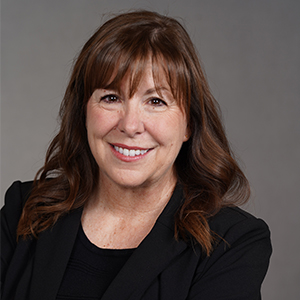Optimal Blue announced yesterday that industry veteran Joe Tyrrell would be taking the CEO role at the company. Tyrrell was a long-time executive at Ellie Mae before it was acquired by Intercontinental Exchange (ICE) in 2020. He served as president of ICE Mortgage Technology for three years before leaving to become the CEO of Medallia, a customer and employee experience company. Optimal Blue was acquired by Constellation Software earlier this year.
Tyrrell sat down with Editor in Chief Sarah Wheeler to talk about his new position and his vision for Optimal Blue.
Sarah Wheeler: You could have chosen to lead any number of mortgage tech companies. Why Optimal Blue?
Joe Tyrrell: One of the things that just has always stuck with me is what we do in the mortgage industry. I’ve worked in a lot of different industries and at the end of the day, putting people into homes, which is really one of the most important beginning points and milestones for family formations, has just always been really near and dear to my heart.

Early in my career, I was with a company and they asked me to transition to a company called Providian. They wanted to see if I could replicate what we’ve done in the mortgage side for what they were doing on the credit card side and so we went in and we did — we had this tremendous success. And I found myself every day going home thinking, this is not what I want to do for a living. So being part of an industry that really helps people get into homes, this just has always been a draw for me.
When I was approached by Constellation and they talked about Optimal Blue, I thought, wow, if you think about everything that lenders have gone through over the last 10-15 years, what lenders really need is the ability to maximize their profitability on every single loan, so that they can just stay in business and then continue to reinvest their business to help more people. There is nobody in this industry that’s more critical in that than Optimal Blue: a secondary marketing platform that’s the only end-to-end solution. I don’t think there’s an area of the business I can make a bigger impact on than this part.
SW: Let’s talk about Constellation. They operate hundreds of companies, so what does it mean for Optimal Blue as far as resources and expertise to have been bought by them?
JT: I’ve been with large public companies and I’ve been with private equity firms and it’s not only what’s the difference, it’s: what’s the best of both? Constellation is this very large public company and it owns a lot of different companies in its portfolio. In many regards, it has the financial scale and stability of any other very large public company, which means you’re not going to have to run your business on a quarterly basis, you’re able to actually just think about what do we need to do to add value to our customers and to continue to grow the business.
The scalability and stability you get from a public company, we get that with Constellation. But also, when you think about private equity, there are a couple of things that they do really, really well. Private equity firms really dial in that focus on retention, and they do it through making sure they’re constantly delivering more and more value. A lot of times that comes through acquisitions. With Constellation, they have that same sort of mentality, but it’s more about: Should we be building something, should we be buying something, or should we be partnering with someone who can make their services more readily available through our platform?
Plus, you get the discipline. Sometimes when you’re running a company, you lose track of the small things that over time have a big impact on your ability to serve your customers. So Constellation keeps that focus and that discipline and, running so many companies, they can bring in best practices, while also getting all that strength of being a public company. It really is just a marrying of the best of those two worlds.
SW: Do you have access to CEOs from other Constellation companies?
JT: Yes, they really foster this belief that regardless of what industry you’re in, there are best practices that companies develop over time. Being a part of the Constellation portfolio, you get access to people who are doing things in completely different verticals, but there are learnings that apply and add a lot of value to our customers and to our partners.
SW: What differentiates Optimal Blue’s technology?
JT: I’ve worked with Optimal Blue for decades now and what I’ve always found is that they understand how mission-critical their job is. With a market that changes this quickly, two things that are really critical are speed and accuracy. And lenders really rely upon this technology to make sure they maximize or optimize the advantages it gives them to be able to drive higher and higher profitability. To me that’s the No. 1 thing: this is a company that’s proven, over time, that they’re scalable and that they’re secure.
Everybody’s talking about generative AI. But we’re in an industry that’s so highly regulated, you cannot afford unintended consequences when you deploy generative AI. And so my approach over the last year and a half is identifying very specific use cases where generative AI can add a high level of value with low to almost no issue from a risk perspective. That’s a perfect fit for what Optimal Blue does and the criticality of the role that they play in helping lenders to be successful.
From a technology standpoint, our industry is filled with these point-to-point solutions where everybody just does a little chunk. Optimal Blue is really the only end-to-end complete platform. It’s not a series of little applications, where you’ve got to worry whether everything is staying in sync and everything is updating at the same time. It’s truly a platform.
So you’ve got great accuracy from a pricing perspective, which flows directly into a pipeline for managing your risk to this open network with all of the connectivity that we have to all the partners, and then bringing that all together with real-time data insights, so that you’re able to lock your loan, you’re able to make sure you’ve got counterparty oversight.
You’ve got a hedging strategy that’s all tied in from the very beginning — all the way through to the securitization and trading of that asset. This single platform and the technology that it’s been built upon all very modern tech enables me to then take the things that I’ve been doing for the last year and a half and plug it directly into this platform.
SW: You were at Ellie when the catchphrase was “automating everything automatable.” How has the mortgage technology landscape changed in just the last few years, especially with AI?
JT: Let’s start with what’s remained the same, and that’s change. One of the challenges in this industry is it feels like the finish line keeps getting moved. Sometimes it gets moved because of regulatory changes and sometimes it gets moved just because of the dynamic of the secondary market. Just when you think you’ve gotten the whole thing automated, you find out there’s some extra steps that you need to go through and we now need to take those into consideration.
And when your intent is to do that in a thoughtful way, it doesn’t mean just slapping another application on it. That’s the one thing that’s a constant in this industry and it’s frankly a challenge that I love.
What has changed is a willingness for lenders to say, it’s time for us to really lean in and look at leveraging technology more. With this downturn coming out of COVID, the problem has been lenders are just trying to survive. But now you are starting to see this mindset shift to: how do we do this so we don’t find ourselves in the same situation in the next valley that we’re in? There is this willingness to look at it in a meaningful way.
So the way we’re approaching generative AI is going to be, let me show you the specific problem we’re going to solve or this specific opportunity we’re going to help you capitalize on. It’s not going to be this generative AI buffet that really doesn’t solve anything — it’s going to be very specific use cases, building upon what we’ve already done in Optimal Blue and using generative AI so that customers get more and more value as they leverage more platform.
SW: What is your vision for Optimal Blue? Where do you hope the company will be in five years?
JT: I’m going to be very, very focused on our customers. The good news is, I already know almost all of them, not just professionally, but in some cases, personally, and so I’m going to make sure that any innovation that we do is really driven by their priorities. So I will be spending a lot of time understanding what they are worrying about, what they think is around the corner and where they want to be in five years. That’s going to drive our plan for the next three to five years: What is it that our lenders are trying to accomplish? And how do we help them get there as fast as we can?
The second thing is, I know that there are a lot of other technology companies that rely heavily on Optimal Blue. And so I’m going to really be focusing on how I engage in a very open and transparent way with all of those partners that make up the supply chain — for loan origination, loan servicing — all of the things that really drive the industry. I’m going to be even more transparent, even more open and even more engaging than when we’ve been in the past. Because for one company to come in and try to solve all of the industry’s problems or challenges or capitalize on opportunities, it’s hard. But when you start to really partner and solve solutions for joint customers in a way where you’re both bringing something to the table, that just helps us drive innovation faster.
Lastly, I’m going to be really focusing on automation, using a lot of generative AI as well as non-generative AI. The ability and accessibility of large language models (LLM) has never been greater. But you’ve really got to have lots of ways that you deploy an LLM, from having a platform that gives the customer an LLM that they can take and train for their very own, to understanding that some of our larger customers already have their own LLM that they spend time training. So you haveto be able to plug that into your platform.
And then you’ve also got to be able to work with all of the LLMs that are available out there. OpenAI has done a really good job with their enterprise license, providing a lot of protection and keeping that data safe and just for that individual customer. There’s so much off the shelf that you can use, you just have to know what problem you’re solving. And again, the No. 1 job for us is protecting our customers’ data — doing that in a way that’s thoughtful and leveraging AI without introducing unintended consequences.






